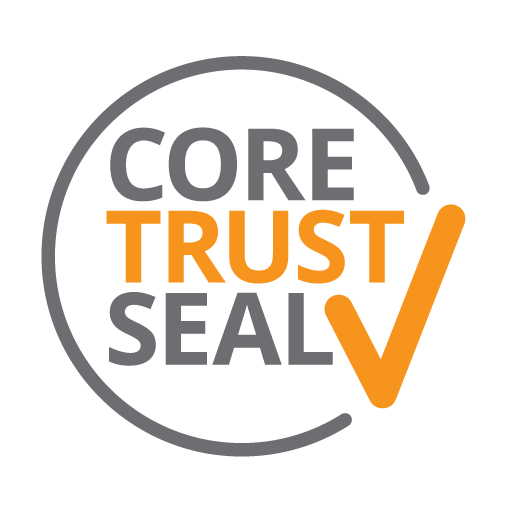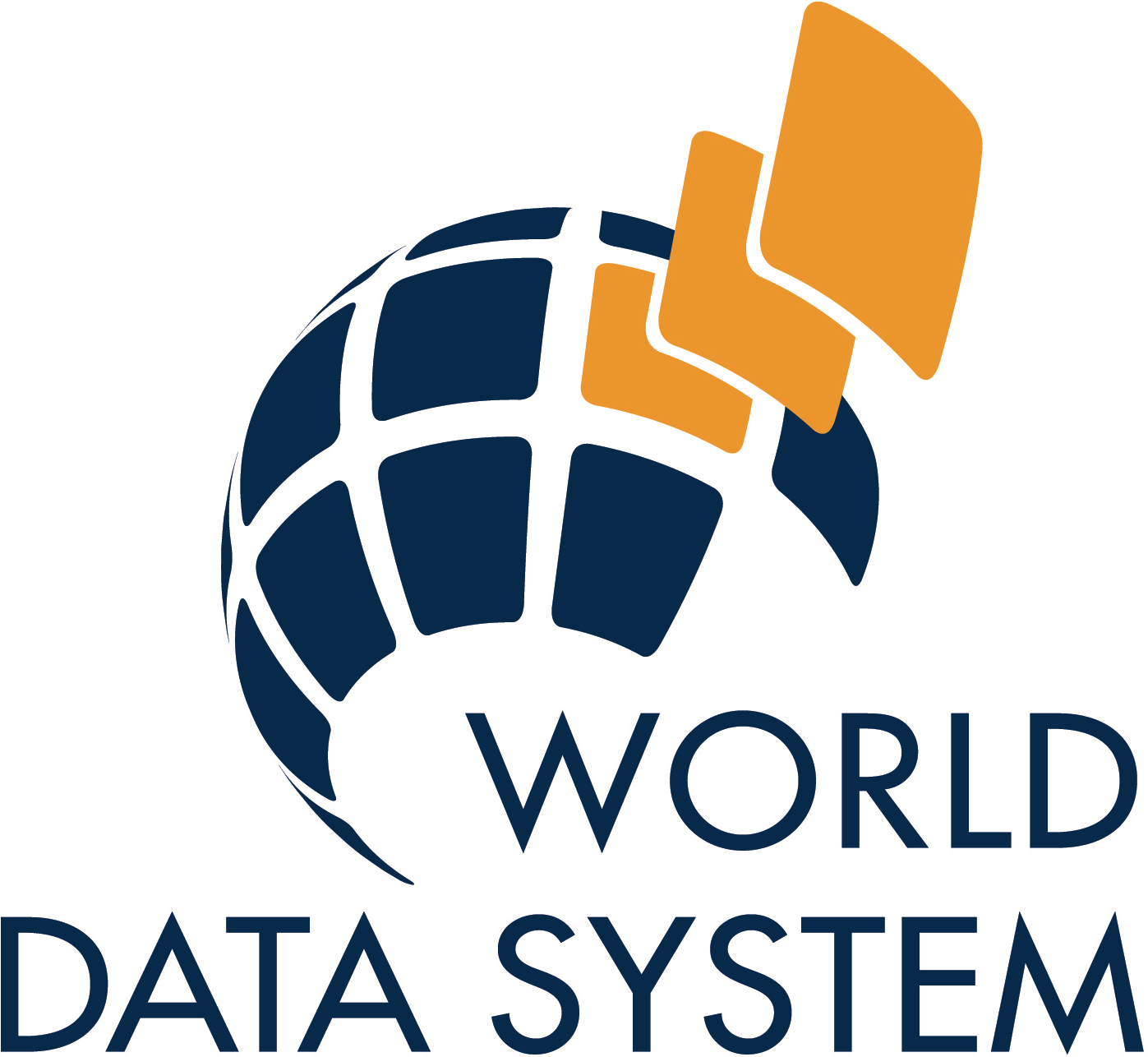
15 March 2021 sees the UK launch of the beta version of the new ARIADNE portal, a powerful user interface enabling exploration of heritage records and archaeological archives from across the world. The portal already enables access to data from the UK, Netherlands, Hungary, Italy, Greece, Slovenia, Spain, Bulgaria, Romania and Sweden, with additional countries being added weekly.
ARIADNE and the ADS
ADS has provided 1,447,912 resources to the portal, including ArchSearch records brokered from NMRs and HERs, links to over 58,000 unpublished fieldwork reports from the ADS Library, and nearly 2000 project archives. The portal provides one of the most effective ways of browsing and searching the majority of ADS holdings, and in this blog we want to discuss some of its potential for research.

First, however, it’s worth rehearsing the long history of joined-up access to European archaeology, and ADS involvement in it. In 1992, Henrik Jarl Hansen, then of the Danish National Museum, published a paper entitled ‘European archaeological databases: problems and prospects’, in J. Andresen et al. (eds) Computing the Past. Computer Applications and Quantitative Methods in Archaeology. Aarhus. 229-37. His famous illustration depicted multi-armed octopus joining tentacles across the continent of Europe.
The first tangible implementation of this vision was led by the ADS in the ARENA project (2001-5), where we worked with partners in Denmark, Norway, Iceland, Romania and Poland to provide joined-up access to the sites and monuments records from heritage agencies of six European countries. ARENA stressed the many archaeological research questions crossed modern political boundaries and needed to draw upon data from multiple countries. The ARENA portal was famous for its visual representation of the complexity of comparing archaeological periods across modern state boundaries.

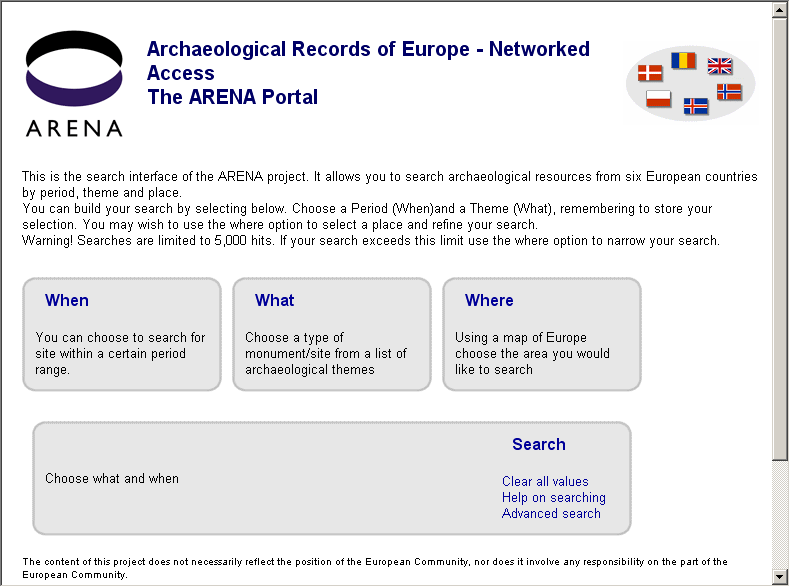
It also pioneered the use of a facetted What, When, Where, paradigm to allow formulation of search queries, subsequently taken up in ARIADNE.
However, ARENA relied upon protocols for interoperability developed in the library world, notably the Z39.50 standard, which had been deployed by the Arts and Humanities Data Service, of which ADS was then a part. In the follow-on project, funded through the preparatory phase for DARIAH, the European e-infrastructure for the Arts and Humanities, we took the opportunity to update the underpinning technology, migrating it to a Web Services Architecture, which will be familiar to users of the Historic England’s Heritage Gateway. Unfortunately, ARENA2 never moved beyond a demonstrator.

In 2013 we had the opportunity to take the next step, with the beginning of funding from the European INFRA programme for ARIADNE, and a major project led by PIN in Italy and ADS in the UK, with 23 partners, which led to the launch of the first ARIADNE portal. The portal established the basis for interoperability along the What, When and Where axes, using mapping to the Getty AAT for “What”, ISO WGS84 for “Where”, and collaborating with Perio.Do for “When”.
In the continuation phase, ARIADNEplus, we now have 41 partners from 23 European countries and 4 international partners. The new ARIADNE portal builds on earlier foundations, but we have overhauled and simplified the underpinning ontology, now based on the AO-CAT, which is fully integrated with the CIDOC CRM. The new portal sits on top of an RDF triplestore, held by our partners in CNR in Italy, and the interface has been re-engineered by the Swedish National Data Service. We believe it is the most powerful search tool for archaeological data yet.
What is the ARIADNE Portal?
The ARIADNE Portal is the expansion of the first ARIADNE project to include the data from ARIADNEplus. The portal now includes a much wider range of archaeological data, all of which can be refined into terms of geography, time period and subject matter as a stand-alone analysis tool.

You can search the portal by where, when, and what.
Additionally, the portal includes a number of improved filters so you can refine by time range, resource type, Getty AAT subjects, keyword, contributor, original subject and dating, and more. These filters can be applied to results from the Map and Timeline.

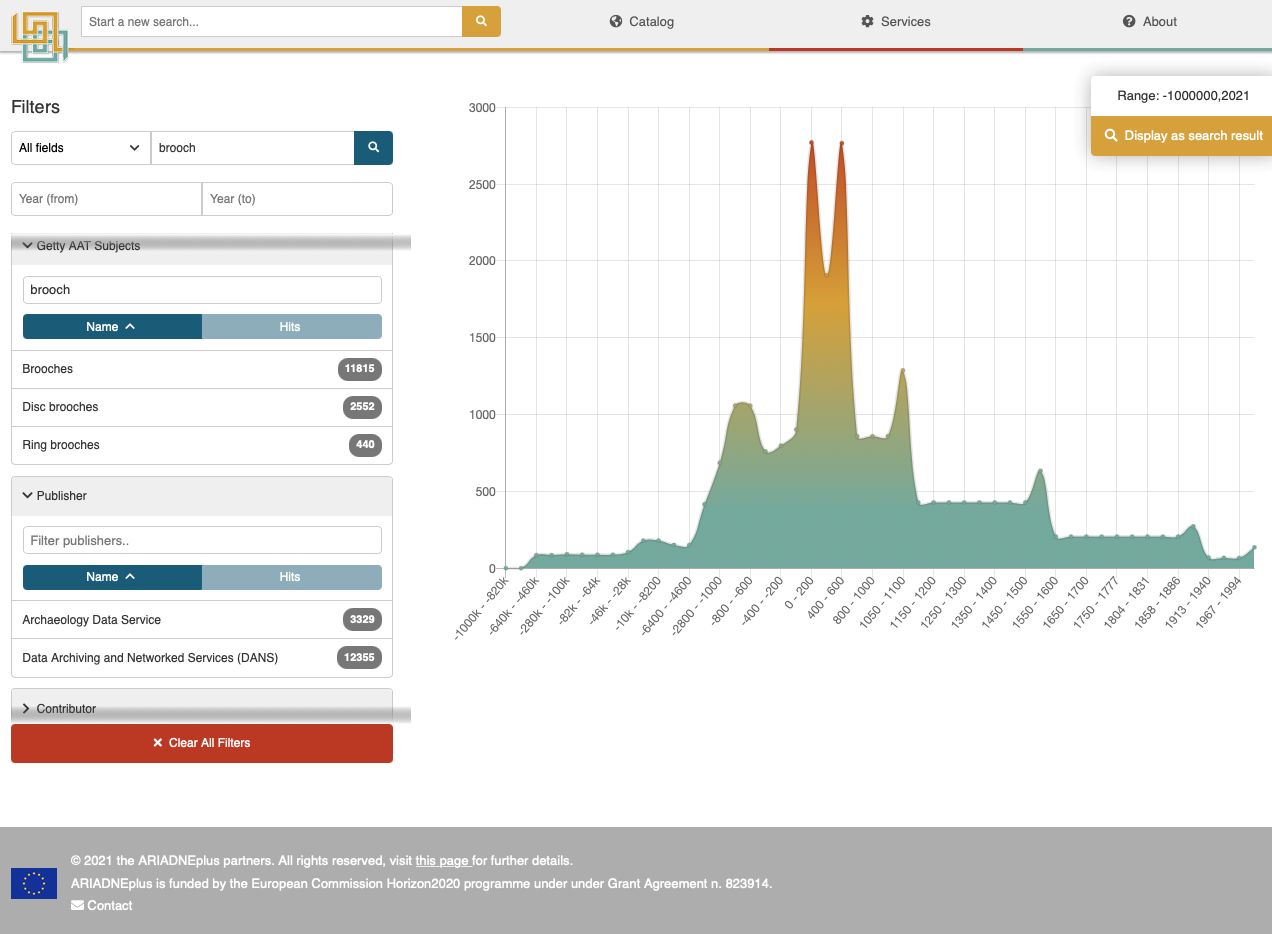
Using the portal
The portal can be explored using the terms shown in the where, when, and what terms but also via a typical search function. This search function has a built-in auto-complete function to help the user refine their search from the start.
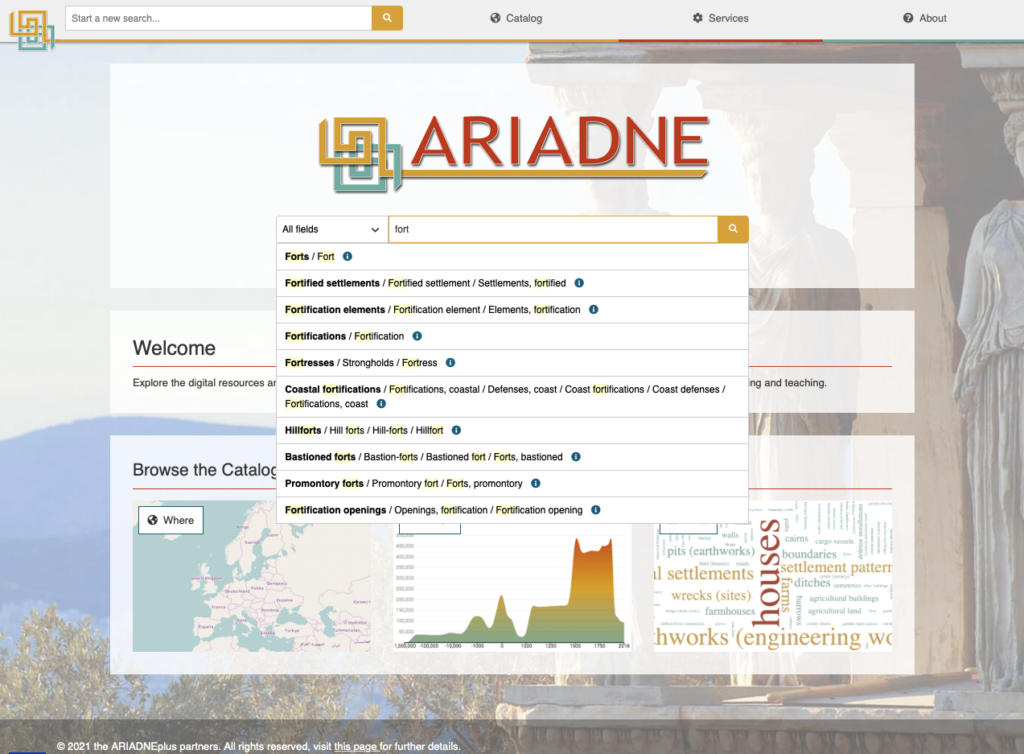
The image below shows the results from searching ‘Hillforts’. It shows on the left hand side, the distribution and timeline of all the hillfort data within the portal and the right side shows results.
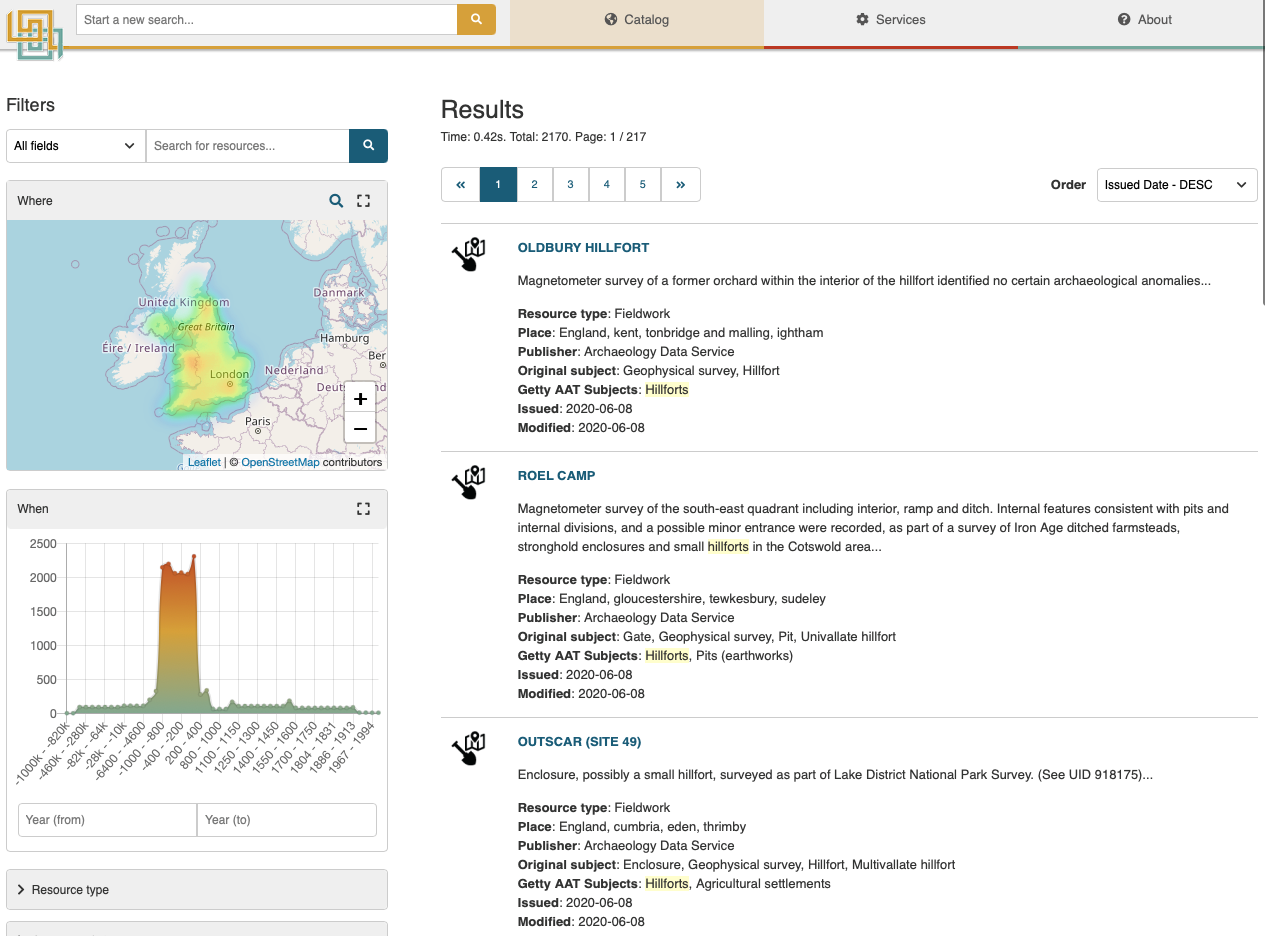
When you select from the results list, you get an interactive map showing the location of the find, or hillfort in this case, as well as the metadata that was supplied. The right allows you to view the information directly from the data provider.


Future developments
Over the next two years we will be adding a lot more data, but also many new features, including multilingual searching (i.e. one term will search across many languages), increased use of the underpinning AAT thesaurus for hierarchical subject searching, and with more GIS functions, including polygon-based searching.
The data and your help
The portal holds data from around Europe. To date, most of the data comes from the UK. Of which, 1.4m records have been supplied by the ADS. For this reason, we are asking the UK archaeology community to take a first look and send us your feedback. Visit ARIADNE Portal, explore, then let us know what you think. Feel free to contact us here on the blog through the comments or email our helpdesk.
ARIADNEplus is a project funded by the European Commission under the H2020 Programme, contract no. H2020-INFRAIA-2018-1-823914.
The views and opinions expressed in this blog are the sole responsibility of the authors and do not necessarily reflect the views of the European Commission.




